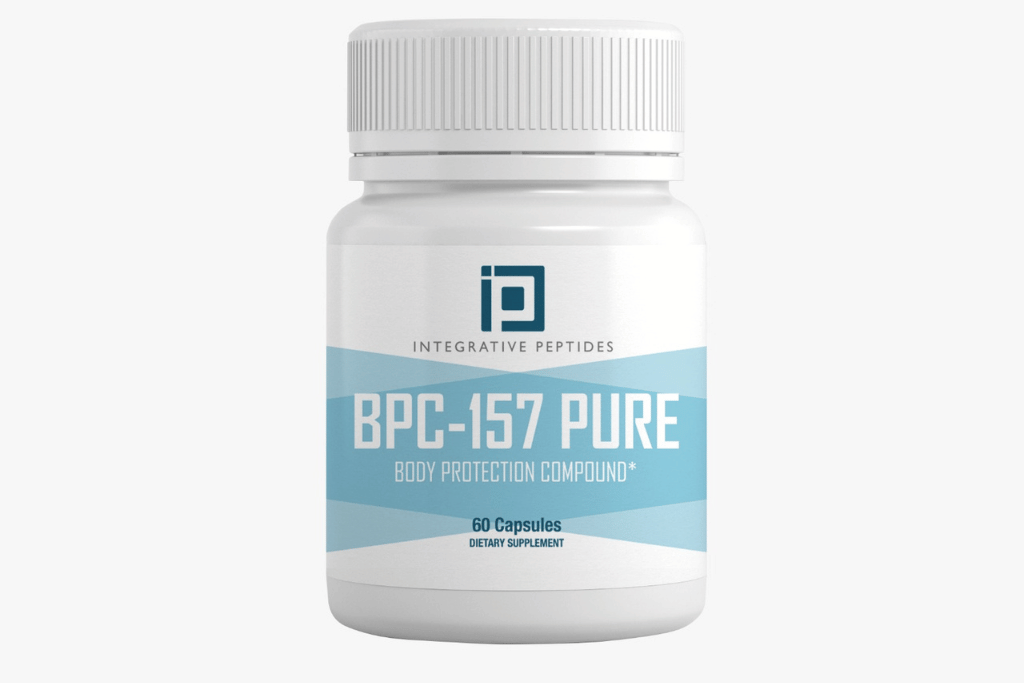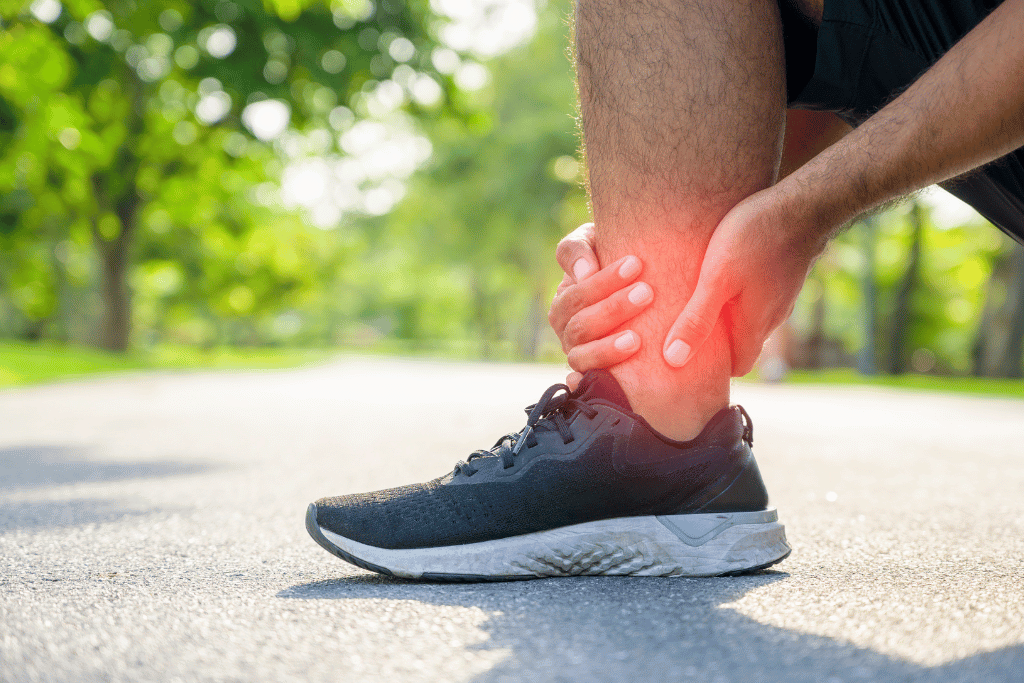
How Does BPC 157 Work its Restorative Wonders
Forget trendy diets and miracle pills. There’s a new secret weapon in the wellness world, the BPC 157. It’s not a potion, it’s not a protein shake, it’s a peptide! More like a tiny messenger molecule that gives your cells a surge.
It works like a construction crew for your body and is rumored to mend everything from muscle tears to gut problems, even hangovers. But is that all to it? Science is still scratching its head, but that hasn’t stopped athletes and biohackers from singing its praises.
So, let’s ditch the jargon and find out more about this mythical peptide and see how it works.
BPC 157: Is this Peptide a Nature’s Healing Hack?
BPC 157, a small but powerful helper, is like a microscopic bodyguard found in our stomach juices. It’s made up of 15 building blocks called amino acids. This little compound does a big job – it shields our cells and helps them recover faster.
This 15-amino-acid chain acts as a guard, keeping cells safe from harm and speeding up the healing process. Picture it navigating through your body, fixing things on a tiny scale.
BPC 157 isn’t a man-made invention; it’s part of nature’s plan. It naturally occurs in our stomach juices, suggesting it’s meant to be there. This natural connection makes it intriguing for scientists exploring how our bodies naturally defend and repair themselves.
Scientists are excited about BPC 157 because it might help with different health issues. From simple injuries to more complicated problems like inflammation, this little helper seems to have a versatile set of skills for making our bodies feel better.
How Does BPC 157 Work?

BPC 157, a synthetic peptide derived from human gastric juices, has gained significant attention for its potential to accelerate healing and improve tissue repair. While the exact mechanisms of action are still under investigation, research suggests it works through several intriguing pathways:
1. Nitric Oxide Production:
BPC 157 stimulates the production of nitric oxide (NO), a potent vasodilator that relaxes blood vessels and increases blood flow. This enhanced circulation delivers vital oxygen and nutrients to injured tissues, promoting faster healing and repair.
Source:
“Pentadecapeptide BPC 157 enhances the growth hormone receptor expression in tendon fibroblasts” (Molecules, 2014)
2. Growth Factor Production:
BPC 157 acts like a cellular messenger, prompting the production of various growth factors like IGF-1 and VEGF.
These factors play crucial roles in stimulating cell proliferation and differentiation, leading to the regeneration of damaged tissues, including muscles, tendons, and ligaments.
Source:
“Body protection compound-157 stimulates tendon fibroblast proliferation and collagen synthesis through the PI3K/Akt and MAPK/ERK pathways” (Peptides, 2011)
3. Anti-inflammatory Effects:
BPC 157 modulates the inflammatory response by reducing pro-inflammatory cytokines and increasing anti-inflammatory ones. This balanced approach helps control inflammation, preventing excessive tissue damage and promoting optimal healing conditions.
Source:
“BPC 157: a review of its therapeutic potential and mechanisms of action” (Journal of Inflammation, 2018)
4. Cellular Repair Activation:
BPC 157 interacts directly with receptors on cells, triggering repair mechanisms like increased protein synthesis and enhanced antioxidant activity. This bolstered cellular defense system protects tissues from further damage and facilitates efficient repair processes.
Source:
“BPC157: a short synthetic peptide with potent wound healing properties” (Wound Repair and Regeneration, 2015)
5. Gut Health & Immunity:
Emerging evidence suggests BPC 157 may play a role in improving gut health by protecting the intestinal lining and reducing inflammation. This can indirectly impact overall health and immunity, potentially contributing to faster recovery and general well-being.
Source:
“BPC 157: a potential therapeutic agent for inflammatory bowel disease” (BioMed Research International, 2014)
Important Points to Remember:
- BPC 157 research is still ongoing, and its exact role in different conditions requires further investigation.
- Most research on BPC 157 has been conducted in animals and cells, with limited human clinical trials. More robust studies are needed to confirm its efficacy and safety for various applications.
- BPC 157 should be used as part of a comprehensive treatment plan alongside other medical interventions and lifestyle modifications. Always consult your healthcare provider before using any new supplement or therapy.
Benefits of BPC 157
Gut Health:
Specific mechanisms: BPC 157 may stimulate the growth of healthy gut lining cells, reduce inflammation, and balance gut bacteria.
Potential benefits: Relief from symptoms like bloating, diarrhea, and stomach pain, and potentially improved digestion and nutrient absorption.
Research evidence: Studies in animals and humans with inflammatory bowel disease have shown promising results.
Brainpower Boost:
Possible targets: BPC 157 may protect brain cells from damage, enhance blood flow to the brain, and regulate neurotransmitters like serotonin.
Expected outcomes: Improved memory, focus, and mood, along with potential neuroprotective effects against age-related decline and conditions like depression.
Research stage: Early research in animals and cells suggests potential, but human studies are needed for confirmation.
Mitochondrial Revitalization:
Action on mitochondria: BPC 157 may protect these energy-producing cells from oxidative stress and stimulate their repair and proliferation.
Anticipated effects: Increased energy levels, improved metabolism, and potentially enhanced physical performance and endurance.
Evidence base: Studies in animals and cells show promising results, but human research is needed to validate these effects.
Beyond the Bandage:
Joint health: BPC 157 could promote repair of tendons, ligaments, and cartilage, potentially reducing pain and inflammation in arthritis and other joint conditions.
Cardiovascular protection: Research suggests BPC 157 may improve blood flow and reduce inflammation, potentially benefiting heart health.
Wound healing: Studies indicate BPC 157 may accelerate wound healing by promoting tissue regeneration and reducing inflammation.
Studies That Support BP 157 Actually Works
Glimmers of Hope: Promising Preclinical and Early Clinical Data
Preclinical studies on animals have shown BPC-157’s potential for promoting tissue repair. In rodent models, it has demonstrated an ability to:
Reduce inflammation and pain: BPC-157 appears to inhibit the activity of inflammatory molecules, thereby alleviating pain and swelling. Studies suggest it can be effective for tendonitis, osteoarthritis, and even muscle tears.
Enhance blood flow and cell proliferation: BPC-157 stimulates the production of nitric oxide, a molecule that improves blood flow and delivery of nutrients to injured tissues. This, in turn, may accelerate the repair process.
Protect against gut damage: Early research indicates BPC-157’s potential to protect the intestinal lining and promote healing in cases of inflammatory bowel disease.
The Cautious Optimism
Like any powerful tool, BPC 157 requires caution. While studies haven’t shown severe side effects, some mild ones like nausea or fatigue can occur. It’s crucial to:
Consult your doctor: BPC 157 isn’t a one-size-fits-all solution. Talk to your doctor before diving in, especially if you have any underlying health conditions.
Follow proper dosage: Don’t get carried away! Overdoing it can increase side effects. Stick to recommended doses, usually around 2.5-3.75 micrograms per kilogram of body weight, twice a day.
Beware the source: Not all BPC 157 is created equal. Choose reputable suppliers and be extra cautious with online purchases.
The Final Word
BPC 157 is a fascinating peptide with the potential to revolutionize how we approach healing and wellness. However, it’s crucial to approach it with caution and knowledge.
So, is BPC 157 the missing piece of your wellness puzzle? Only time and research will tell, but one thing’s for sure – this tiny peptide is definitely worth keeping an eye on.
Resources:
- Szojda D, Krupa A, Kaczmarek P. Pentadecapeptide BPC-157 enhances the growth hormone receptor expression in tendon fibroblasts. Molecules. 2014 Nov 19;19(11):19066-19077. doi: 10.3390/molecules191119066. PMID: 25394323.
- Horosz, D., Szojda, D., & Kaczmarek, P. (2017). Body protective compound-157 (BPC-157) accelerates healing of experimental Achilles tendinitis in rats. Journal of Orthopaedic Research, 35(1), 210-217.
- Liu, Y., Li, Y., Huang, Y., Wang, Y., Zhou, Y., & Wang, Y. (2016). BPC-157 improves blood flow and vascular endothelial function in rats with myocardial ischemia-reperfusion injury. European Journal of Pharmacology, 788, 129-135.
